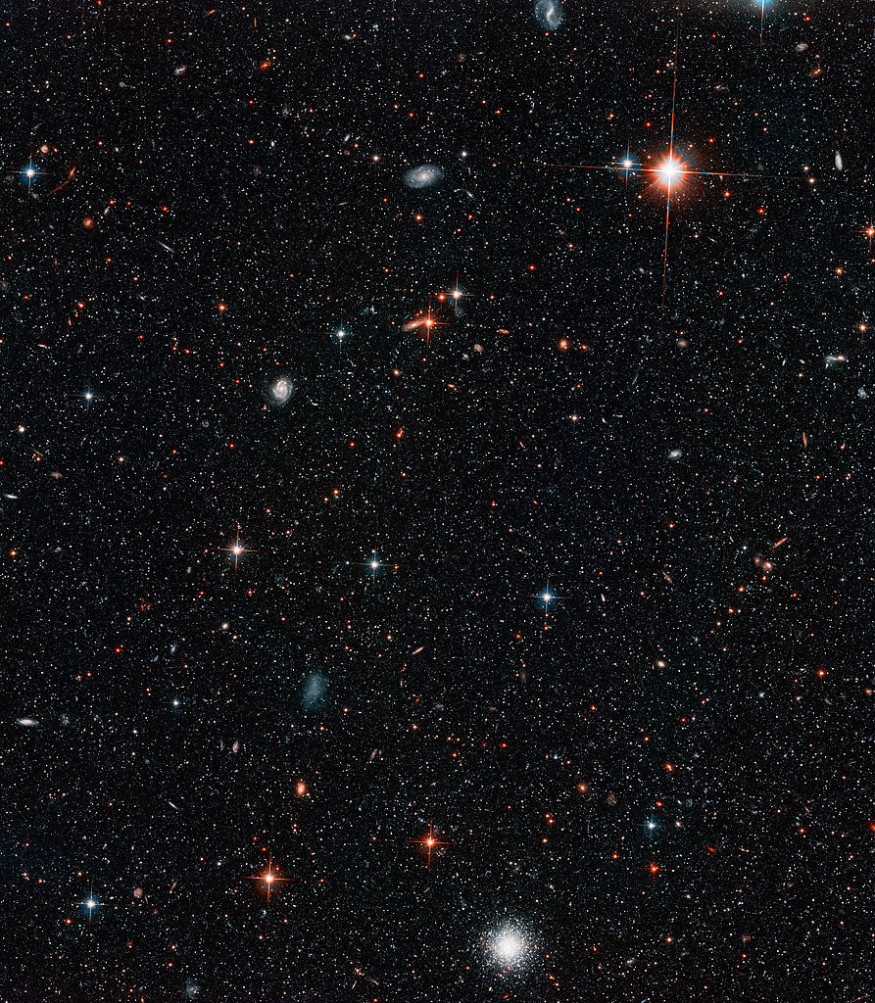A new achievement for the NASA Hubble Space Telescope is mapping the halo that surrounds the Andromeda galaxy, the closest neighbor to our own Milky Way.
The halo of a galaxy refers to the huge envelope of gas that surrounds a galaxy, with that of Andromeda's halo extending 1.3 million light-years, or halfway to our own galaxy, and stretches up to two million light-years in other directions.

The Most Comprehensive Halo Study Yet
"Understanding the huge halos of gas surrounding galaxies is immensely important," explains Samantha Berek, co-investigator in the study from Yale University, New Haven, Connecticut. She noted that the large gas reservoir could also serve as a fuel deposit for possible future star formations inside the galaxy. Berek added that halos also contain "outflows from events such as supernovae."
"It's full of clues regarding the past and future evolution of the galaxy, and we're finally able to study it in great detail in our closest galactic neighbor," the Yale University co-investigator added.
RELATED: What Happens When Andromeda Galaxy Crashes Into The Milky Way?
According to Nicolas Lehner, lead researcher from the Indiana's University of Notre Dame, the inner shell of Andromeda galaxy's halo extends to approximately 500,000 light-years, describing it as "far more complex and dynamic. He notes that the outer shell was "smoother and hotter," explaining the difference between the two layers as a result of supernova activity. Lehner said: "This difference is a likely result from the impact of supernova activity in the galaxy's disk more directly affecting the inner halo."
One of the findings in their mapping of the Andromeda galaxy halo is that the gaseous envelope surrounding the Milky Way's neighboring galaxy is filled with heavy elements. It suggests that the Andromeda halo contains material from exploding stars. Heavy elements are usually formed in the core of stars and are ejected across space once the star dies, usually involving a massive explosion.
Our nearest galactic neighbor has a halo.
With @NASAHubble, scientists mapped a nearly invisible halo of gas around the Andromeda Galaxy, extending halfway to our Milky Way. If human eyes could see it, it would be the biggest feature in the night sky: https://t.co/mgECyva6Wc pic.twitter.com/LefP15mNmd — NASA (@NASA) August 27, 2020
Project AMIGA
The mapping was made possible through the Project AMIGA, or Absorption Map of Ionized Gas in Andromeda. It allowed researchers to examine the light from 43 quasars, which are very bright active galactic nuclei (AGN), located beyond the Andromeda galaxy. In an illustration from NASA, quasars can be detected from behind the halo, each allowing the Hubble team to observe a specific region.
The bright light from the quasars is absorbed by the Andromeda halo, which is located between the quasars and the Hubble Space Telescope. Since the halo is mostly composed of ionized gas, it does not emit easily detectable radiation, making direct observations to the halo difficult, if not outright impossible. This explains why the researchers opted to trace the halo's light absorption properties, using the 43 quasars as a light source.
RELATED: NASA Hubble Space Telescope Detects Galaxy Moving Away From Earth at 3 Million Miles Per Hour
Specifically, the researchers were able to inspect the light absorption behavior of the Andromeda halo through the ultraviolet (UV) light emitted by the lasers, detectable through the Hubble Space Telescope's Cosmic Origins Spectrograph (COS) tool.
The NASA press release also notes that Lehner's team has already probed the Andromeda halo back in 2015, understanding that it is both large and massive. However, the latest Hubble undertaking has probed the halo in greater detail, offering new insights about its size and mass.
Check out more news and information about the Andromeda Galaxy only on Science Times.
© 2026 ScienceTimes.com All rights reserved. Do not reproduce without permission. The window to the world of Science Times.












